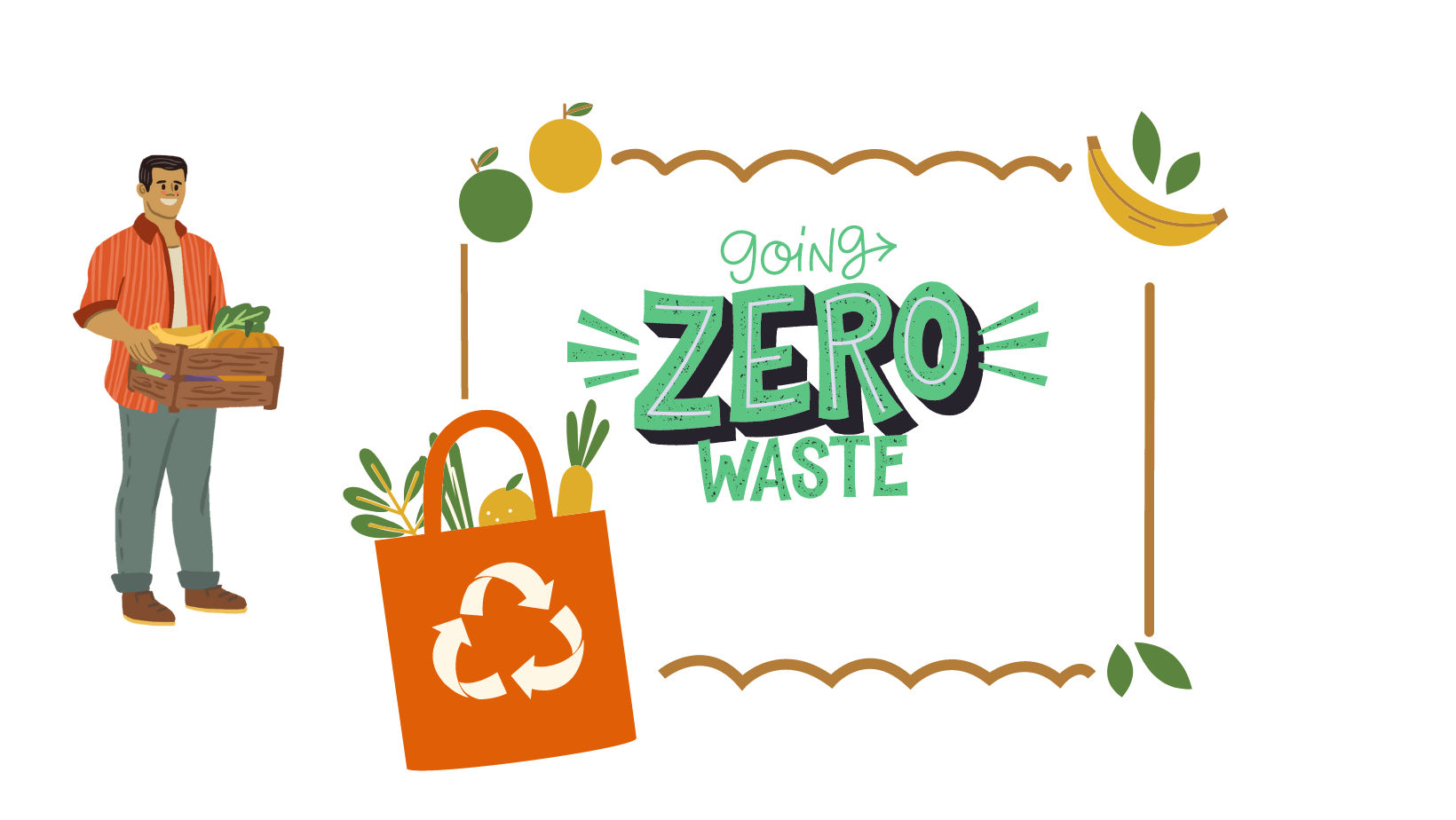Housing shortages, waste disposal and public health concerns are some of the major environmental and social challenges we face today. These challenges are exacerbated by rapid urbanization, deforestation, climate change, pollution, and the demand for transitions to renewable resources. The construction industry is a significant contributor to these challenges.
According to the International Energy Agency (IEA), the building and construction industry contributed up to 39% of energy and process-related carbon dioxide emissions in 2018, with the manufacturing of building materials and products accounting for 11% of these emissions.
Additionally, the construction industry contributes 40% to drinking water pollution, 23% to air pollution, and 50% to landfill waste.
Despite these negative effects, we cannot shut down this industry due to the increasing need for housing alongside it’s significant developmental and economic benefits.
The construction industry in Kenya is essential to development. In 2019, for instance, Kenya’s construction industry employed almost 222,000 people, contributing 5.6% to the Gross Domestic Product (GDP).
The Kenyan government is also keen on affordable housing and has made it a priority.
Table of Contents
Despite These Laws and Processes, There’s a Sustainability Gap
The National Building Code (2020) Role In Greening Kenya’s Construction Industry
Circularity in the Construction Industry
Reuse Of Materials Banned By the Proposed Building Code
Kenya’s Big Four Agenda
Through the “Big Four” transformation agenda, the Government of Kenya has identified four priority initiatives to be implemented between 2017 and 2022, namely; food security, manufacturing, affordable healthcare, and affordable housing. The government’s plan to provide affordable housing includes a flagship initiative targeted at developing 500,000 housing units across the country.
While the affordable housing initiative can be lauded from a development and economic perspective, the environmental cost of such large scale resource intensive projects is expected to be quite high. The government is yet to make it clear to the public how sustainability and green initiatives will be achieved and employed.
The only indication of environmental concern has been through the State Department of Housing’s technical specifications for Expression of Interest (EOI) on innovative building materials and technology exhibition.
In the document, the government aims for ‘affordable building materials, the use of environmentally friendly building materials and techniques, and efficient construction technologies’. How far then can we expect this project to apply these principles?
Furthermore, the Environmental Impact Assessment (EIA) reports have good proposed environmental and social management plans. Will these be applied in all the project phases?
Importance of Environmental Impact Assessment (EIA) and Environmental Audits (EA) For Construction Projects.
An Environmental Impact Assessment (EIA) is a process that evaluates the potential environmental impacts of a proposed development or project. It also accounts for expected socio-cultural, economic, and human health impacts, both positive and negative.
In Kenya, an EIA is done only once, prior to the commencement of a project, and done by an EIA/EA expert duly registered and licensed by the National Environment Management Authority (NEMA).
An Environmental Audit (EA), on the other hand, is an assessment done during the operational stage of a project or development. It assesses the extent to which the project or development observes the practices outlined in the environmental management plan in an EIA report, during and even beyond the building cycle, to minimize its negative impacts on the environment, while improving the positive impacts.
In Kenya, this is done annually, and by a registered EIA/EA expert licensed by NEMA.
An EIA is a legal requirement (Environmental (Impact Assessment and Audit) (Amendment) Regulations, 2019), complementing two main laws concerning environmental issues in our country:
- The Constitution of Kenya- Chapter 4 on the Bill of Rights, Chapter 5 on Land and Environment, Article 42 on the right to a clean and healthy environment, and Article 69 on obligations of the state including setting up of systems of Environmental Impact Assessment (EIA) and Environmental Audit (EA). Article 69 provides for sustainable use, management, and conservation of natural resources, while Article 70 gives citizens the right to apply to court when their rights to a clean and healthy environment has been denied, violated, infringed or threatened. Section 3 of Article 70 states that the applicant doesn’t have to demonstrate that any person has suffered injury or incurred loss.
- Environmental Management and Coordination Act (EMCA) (Amended) 2015- This act has established institutions such as National Environment Management Authority (NEMA), National Environmental Complaints Committee, National Environment Tribunal, and County Environment Committees, among others.
There are also regulatory frameworks under EMCA, including Noise & Excessive Vibrations Regulations, 2009; Water Quality Regulations, 2006; Waste Management Regulations, 2006; and Wetland, Riverbanks, Lakeshores, and Sea Shores Management) regulations, 2009, among others.
Despite These Laws and Processes, There’s a Sustainability Gap

Undoubtedly, Kenya has robust environmental laws. However, the current global climate crisis calls for a more sustainable construction industry and development in general.
What is sustainable construction/green building?
The United States Environmental Protection Agency (EPA) refers to sustainable construction/green building as “the practice of creating structures and using processes that are environmentally responsible and resource-efficient throughout a building's life-cycle from siting to design, construction, operation, maintenance, renovation, and deconstruction.”
Similarly it is “the creation and responsible management of a healthy built environment based on resource-efficient and ecological principles” as defined by Professor Charles Kibert in 1994 at the First International conference of CIBTG16 on sustainable construction.
The conference set the following principles and model for sustainable construction.
- Minimization of resource consumption
- Use of recyclable or renewable resources
- Creation of healthy and non-toxic environments
- Maximization of resource reuse
- Protection of the natural environment
- Creating quality built environments
Does Kenya have a guideline on how sustainable construction can be achieved?
No.
There is no specific guideline on how green construction practices are to be implemented. This is usually left to the discretion of the EIA/EA expert preparing an environmental management plan in an EIA/EA report, and developer goodwill.
Consequently, Kenya can specifically deal with the construction industry with a building code that’s also focused on environmental impacts and sustainability issues.
What Is A Building Code?
A building code is a set of rules specifying standards that constructed projects must conform to.
The code, which varies from country, state, or particular geographical areas, specifies minimum standards for quality of materials, design, safety, maintenance, and occupancy, among other aspects.
Commonly, this is done to protect property, human life and health, and public welfare. Building codes should now also actively consider the environment.
In Kenya, the 1968 building code has been in use to date. The government is determined to discard this 1969 code (British Standards) and replace it with a new set of rules, known as Eurocodes.
So, we ask…
Does the proposed building code guide the construction industry on how to adopt green/ sustainable practices?
The National Building Code (2020) Role In Greening Kenya’s Construction Industry
Essentially, through the “Big Four” agenda, as seen in the Expression of Interest (EOI) document, the government purposes for a more sustainable construction industry.
But, is this entrenched in the law for private developers and Kenyan citizens to ensure a greener industry?
Yes. The proposed National Building Code, 2020 is one way.
The code:
- Finally caught up with local resources and materials. It now allows for the use of locally available building materials e.g. mangrove timber and coral stones. While this is a welcome addition, we need to have measures in place for the sustainable extraction of these materials, and restoration of resource extraction sites.
- Has guidelines on natural cooling, lighting, and ventilation, prompting maximization of energy efficiency.
- Allows installation of renewable energy as per Energy Act 2019.
- Promotes the use of secure and durable materials. The circular economy is about long-lasting products.
- Promotes rain-water harvesting, and proper handling of stormwater.
How about the circularity of building materials?
Circularity in the Construction Industry

Some might argue that circularity in the construction industry is an idealistic concept. Well, circularity in the construction industry is possible, although not fully achievable. We strive towards it and the steps taken will lead to a more sustainable construction process.
The circular economy is based on three concepts. Designing out waste and pollution, keeping products and materials in use, and regenerating natural systems.
It is possible to minimize waste by forming partnerships with entities that find value in waste products. For example, floor tiles can be efficiently cut to reduce waste, and any waste produced is sold to artists to create mosaic pot plants for potted plants at the operational stage of the project.
Using high-quality fixtures means that they can be reused after the decommissioning phase, in a new project. For example, taps, sinks, door handles, among others. Renewable energy is also used where possible.
Reuse Of Materials Banned By the Proposed Building Code
Like the 1968 building code (section 33) we've been using, the current proposed code outlines a blanket ban on the reuse of construction materials in the building industry (section 61). Is this an issue of standardization and ensuring the safety of our buildings? Section 61 should justify this law, by explicitly outlining which construction materials are banned and for which purposes has reuse been prohibited. Otherwise, it remains highly vague in its current form.
That said, this doesn't mean that there isn't a market for these materials or construction waste. For example:
- Preexisting concrete from demolitions can be used to manufacture recycled concrete which can be used in landscaping projects and specific civil works.
- At the demolition stage, items such as fixtures including doors, taps, sinks, bulbs, doorknobs, door handles, steel, window grills, and glasses, can be carefully removed and reused in other projects. This means that we need to install long-lasting fittings, to reduce waste, encourage reuse, and save money as we save the environment.
- Timber/ formwork can be reclaimed and repurposed into new products, or sold to people still using firewood as a source of fuel.
- Sawdust can be sold to poultry farmers, used to produce biomass briquettes and particle board, mixed with leftover paint for easier disposal and containing spills, or used to fill wood holes, among other uses.
- Paper can be sent to recycling facilities. For example, Chandaria Industries makes tissue from recycled paper.
Since the proposed code bans but doesn't explicitly address other ways that these materials can be reused, repurposed, or recycled, and the guidelines aren't embedded in the law, the issue is reduced to a matter of developer goodwill.
Experts should look into technologies for upcycling and downcycling construction materials, determine what can be reused in the construction industry, what can’t be reused, identify alternative industries that will find value in the materials, and also assess which materials can be reused in a different section of the construction industry that requires lower standards.
The code should also look at issues surrounding material banks and material passports, to give a well-guided and informed guideline on the reuse of construction materials. Industry stakeholders (i.e., government, developers, civil society and researchers) can’t afford to be mum/imprecise on this issue.
Kenya’s building code can address circularity in the construction industry better, by including guidelines on waste and second-hand materials at the construction, operational, and decommissioning phases, to ensure a circular Kenyan construction industry.
What’s The Way Forward?

The proposed Building Code 2020 is a good start but needs more input on how to achieve circularity. We also need to train everyone in the construction industry’s value chain to be more intentional about sustainability practices.
Various gaps in sustainable practices (Koigi, Mary V. W. 2019) have been identified in Kenya’s construction industry:
- Minimal steps are taken to reduce natural resource extraction.
- Not much emphasis is given to green energy use and conservation.
- Lack of/ inadequate construction worker training on efficient and sustainable water use, as well as proper waste management, and sustainable practices in general.
- Projects are not entirely designed to actively promote worker and general society health and safety.
- Corruption by governing bodies contributes towards non-compliance to environmental regulations and policies.
- An uncoordinated construction sector
We suggest that:
- Contractors, workers, and all relevant stakeholders in this industry should be trained on sustainable construction practices.
- More awareness should be raised to instill and encourage adherence to good practice and regulation.
- Environmentalists should be part of the design team. Their role should be extended beyond preparing an Environmental Impact Assessment (EIA), and an Environmental Audit (EA) annually, thereafter. They should also conduct site visits to ensure sustainable practices throughout the construction, operational, and decommissioning phases.
- Guidelines on reuse of contruction materials should be developed.
References
Koigi, Mary V. W. (2019). An Assessment of Environmental Sustainability Practices in Construction Industry. A Case Study of Tilisi Development Project Site, Kiambu County, Kenya
*Don't be mean. Be Green*





















